Iqbal Mohomed
AppBuddy: Learning to Accomplish Tasks in Mobile Apps via Reinforcement Learning
Jun 06, 2021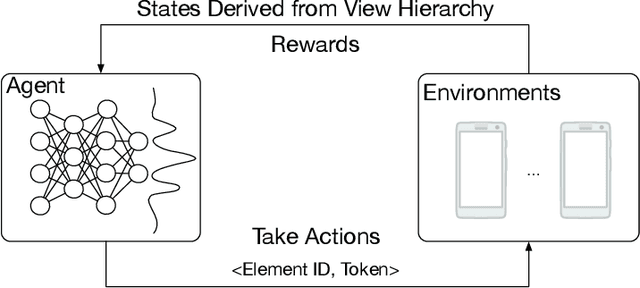

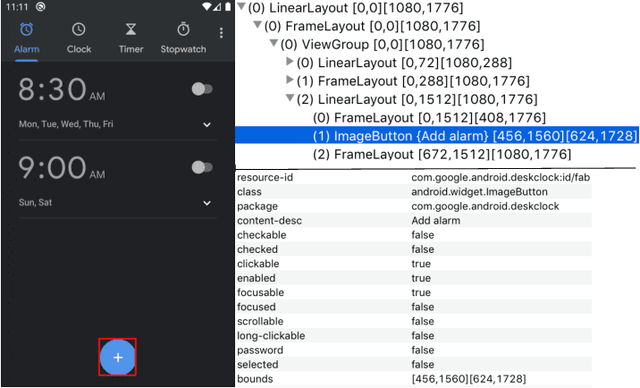
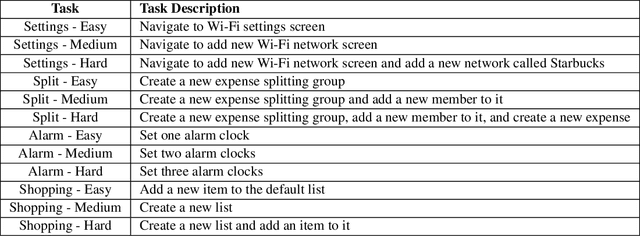
Abstract:Human beings, even small children, quickly become adept at figuring out how to use applications on their mobile devices. Learning to use a new app is often achieved via trial-and-error, accelerated by transfer of knowledge from past experiences with like apps. The prospect of building a smarter smartphone - one that can learn how to achieve tasks using mobile apps - is tantalizing. In this paper we explore the use of Reinforcement Learning (RL) with the goal of advancing this aspiration. We introduce an RL-based framework for learning to accomplish tasks in mobile apps. RL agents are provided with states derived from the underlying representation of on-screen elements, and rewards that are based on progress made in the task. Agents can interact with screen elements by tapping or typing. Our experimental results, over a number of mobile apps, show that RL agents can learn to accomplish multi-step tasks, as well as achieve modest generalization across different apps. More generally, we develop a platform which addresses several engineering challenges to enable an effective RL training environment. Our AppBuddy platform is compatible with OpenAI Gym and includes a suite of mobile apps and benchmark tasks that supports a diversity of RL research in the mobile app setting.
VASTA: A Vision and Language-assisted Smartphone Task Automation System
Nov 04, 2019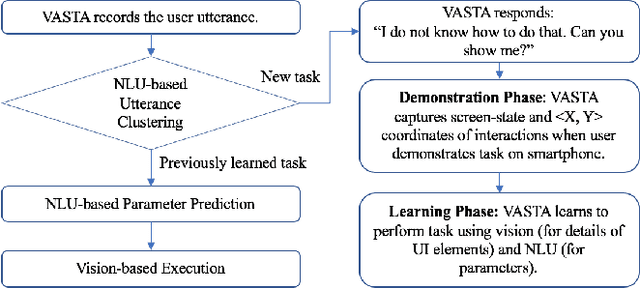

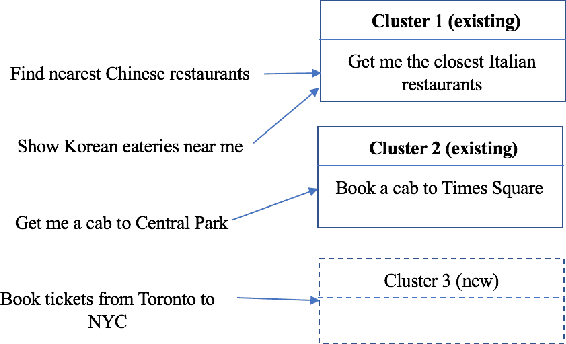

Abstract:We present VASTA, a novel vision and language-assisted Programming By Demonstration (PBD) system for smartphone task automation. Development of a robust PBD automation system requires overcoming three key challenges: first, how to make a particular demonstration robust to positional and visual changes in the user interface (UI) elements; secondly, how to recognize changes in the automation parameters to make the demonstration as generalizable as possible; and thirdly, how to recognize from the user utterance what automation the user wishes to carry out. To address the first challenge, VASTA leverages state-of-the-art computer vision techniques, including object detection and optical character recognition, to accurately label interactions demonstrated by a user, without relying on the underlying UI structures. To address the second and third challenges, VASTA takes advantage of advanced natural language understanding algorithms for analyzing the user utterance to trigger the VASTA automation scripts, and to determine the automation parameters for generalization. We run an initial user study that demonstrates the effectiveness of VASTA at clustering user utterances, understanding changes in the automation parameters, detecting desired UI elements, and, most importantly, automating various tasks. A demo video of the system is available here: http://y2u.be/kr2xE-FixjI
Dynamic Scheduling of MPI-based Distributed Deep Learning Training Jobs
Aug 21, 2019


Abstract:There is a general trend towards solving problems suited to deep learning with more complex deep learning architectures trained on larger training sets. This requires longer compute times and greater data parallelization or model parallelization. Both data and model parallelism have been historically faster in parameter server architectures, but data parallelism is starting to be faster in ring architectures due to algorithmic improvements. In this paper, we analyze the math behind ring architectures and make an informed adaptation of dynamic scheduling to ring architectures. To do so, we formulate a non-convex, non-linear, NP-hard integer programming problem and a new efficient doubling heuristic for its solution. We build upon Horovod: an open source ring architecture framework over TensorFlow. We show that Horovod jobs have a low cost to stop and restart and that stopping and restarting ring architecture jobs leads to faster completion times. These two facts make dynamic scheduling of ring architecture jobs feasible. Lastly, we simulate a scheduler using these runs and show a more than halving of average job time on some workload patterns.
 Add to Chrome
Add to Chrome Add to Firefox
Add to Firefox Add to Edge
Add to Edge